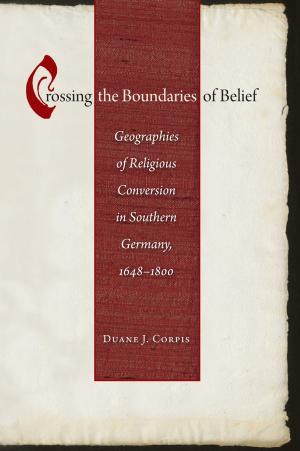The Flirt's Tragedy
Desire without End in Victorian and Edwardian Fiction
Fiction & Literature, Literary Theory & Criticism, British| Author: | Richard A. Kaye | ISBN: | 9780813922003 |
| Publisher: | University of Virginia Press | Publication: | May 29, 2002 |
| Imprint: | University of Virginia Press | Language: | English |
| Author: | Richard A. Kaye |
| ISBN: | 9780813922003 |
| Publisher: | University of Virginia Press |
| Publication: | May 29, 2002 |
| Imprint: | University of Virginia Press |
| Language: | English |
In the flirtation plots of novels by Jane Austen, Charlotte Brontë, and W. M. Thackeray, heroines learn sociability through competition with naughty coquette-doubles. In the writing of George Eliot and Thomas Hardy, flirting harbors potentially tragic consequences, a perilous game then adapted by male flirts in the novels of Oscar Wilde and Henry James. In revising Gustave Flaubert’s Sentimental Education in The Age of Innocence, Edith Wharton critiques the nineteenth-century European novel as morbidly obsessed with deferred desires. Finally, in works by D. H. Lawrence and E. M. Forster, flirtation comes to reshape the modernist representation of homoerotic relations.
In The Flirt’s Tragedy: Desire without End in Victorian and Edwardian Fiction, Richard Kaye makes a case for flirtation as a unique, neglected species of eros that finds its deepest, most elaborately sustained fulfillment in the nineteenth-century and early twentieth-century novel. The author examines flirtation in major British, French, and American texts to demonstrate how the changing aesthetic of such fiction fastened on flirtatious desire as a paramount subject for distinctly novelistic inquiry. The novel, he argues, accentuated questions of ambiguity and ambivalence on which an erotics of deliberate imprecision thrived. But the impact of flirtation was not only formal. Kaye views coquetry as an arena of freedom built on a dialectic of simultaneous consent and refusal, as well as an expression of "managed desire," a risky display of female power, and a cagey avenue for the expression of dissident sexualities. Through coquetry, novelists offered their response to important scientific and social changes and to the rise of the metropolis as a realm of increasingly transient amorous relations.
Challenging current trends in gender, post-gender, and queer-theory criticism, and considering texts as diverse as Darwin’s The Descent of Man and Gilbert and Sullivan’s The Mikado, Kaye insists that critical appraisals of Victorian and Edwardian fiction must move beyond existing paradigms defining considerations of flirtation in the novel. The Flirt’s Tragedy offers a lively, revisionary, often startling assessment of nineteenth-century fiction that will alter our understanding of the history of the novel.
In the flirtation plots of novels by Jane Austen, Charlotte Brontë, and W. M. Thackeray, heroines learn sociability through competition with naughty coquette-doubles. In the writing of George Eliot and Thomas Hardy, flirting harbors potentially tragic consequences, a perilous game then adapted by male flirts in the novels of Oscar Wilde and Henry James. In revising Gustave Flaubert’s Sentimental Education in The Age of Innocence, Edith Wharton critiques the nineteenth-century European novel as morbidly obsessed with deferred desires. Finally, in works by D. H. Lawrence and E. M. Forster, flirtation comes to reshape the modernist representation of homoerotic relations.
In The Flirt’s Tragedy: Desire without End in Victorian and Edwardian Fiction, Richard Kaye makes a case for flirtation as a unique, neglected species of eros that finds its deepest, most elaborately sustained fulfillment in the nineteenth-century and early twentieth-century novel. The author examines flirtation in major British, French, and American texts to demonstrate how the changing aesthetic of such fiction fastened on flirtatious desire as a paramount subject for distinctly novelistic inquiry. The novel, he argues, accentuated questions of ambiguity and ambivalence on which an erotics of deliberate imprecision thrived. But the impact of flirtation was not only formal. Kaye views coquetry as an arena of freedom built on a dialectic of simultaneous consent and refusal, as well as an expression of "managed desire," a risky display of female power, and a cagey avenue for the expression of dissident sexualities. Through coquetry, novelists offered their response to important scientific and social changes and to the rise of the metropolis as a realm of increasingly transient amorous relations.
Challenging current trends in gender, post-gender, and queer-theory criticism, and considering texts as diverse as Darwin’s The Descent of Man and Gilbert and Sullivan’s The Mikado, Kaye insists that critical appraisals of Victorian and Edwardian fiction must move beyond existing paradigms defining considerations of flirtation in the novel. The Flirt’s Tragedy offers a lively, revisionary, often startling assessment of nineteenth-century fiction that will alter our understanding of the history of the novel.















